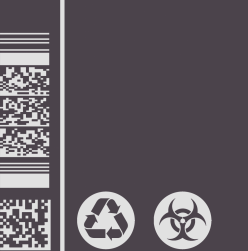Décor [Decoration of scene]
Setting [Where the scene takes place]
Set dressing [Object not used by actors]
Show the place or changes of place, telling many other messages.
Props [Objects used by actors]
Show character (like set dressing).
Costume [Actors’ clothes]
Actors’ clothes sometime talk before the characters’ words.
Show character (like set dressing).
Show location in space and time.
—————–split line (ง •_•)ง—————–
Lighting [extremely important]
Three-point lighting [Common lighting setups for close up]
Key light as the main source of light.
Fill light fills in the shadows created by the key light.
Backlight separating object from the background.
(Too much lighting tips to tell, but most lighting setups on Key Fill and Back)
High key lighting [Bright lights & bright colours | strong key &stronger fill]
Low key lighting [Dark lights & somber mood]
Strong backlight can emphasize the outline of the person.
Chiaroscuro [Contrast between the bright]
This confused me.
Hard lighting [Hard shadows]
Making the scene tough angular and unflattering.
Used on villains, I think.
Only a few people with delicate faces can still be beautiful under hard light. Because hard light will show facial deconstruction and magnify defects. (What I Learned When I am trying photography)
Soft lighting [Blurred shadows and no facial structure]
Soft light doesn’t draw attention.
Ambient lighting [The original light in the scene]
Unmotivated lighting [Fake light]
Not realistic but still striking.
Motivated lighting [Light is an element of the scene]
Motivated lighting can be a director’s toy!
—————–split line (ง •_•)ง—————–
Colour
Black and white (B/W) [Technology limitations]
Economical.
Tinting [Entire scene is in a certain colour]
Sepia tone [One of the most common colours to tint film]
Dusty look.
Colour film [256(R)×256(G)×256(B)]
Colour grading [Selectively merged colours with each scene]
Not only costuming and production design.
Saturation [Highly | Lowly]
Highly saturated scene => Bright and Exciting
Lowly saturated scene => Washed out and Desolate
Colour palette [Modern toning]
Palette can be broad taking in the entire spectrum by modern image technology.
Selectively drawing attention to a single colour that dominates the others.
Deep erotic reds
Rich emotional blues
Digitized unnatural greens
Stately browns reds and golds => Antique
D saturated reds blacks and golds => Ancient
Saturated blues and oranges => Modern
Whites and steely cyan => Futuristic
Blacks and blues => dark night
Yellows, reds and greens => bright new day
—————–split line (ง •_•)ง—————–
Space [Like composition in panting]
Balance [Gives weight to the frame]
This is really a big topic.
The composition can convey a lot of messages to the audience.
Deep space [Long depth of field]
Draw attention to the distance between objects.
Shallow space [Medium shot]
Emphasizing the closeness of the subject and background objects.
Implying no depth.
Offscreen space [Using a mirror or character’s expression]
Expand the space and draws attention to something out of the frame.
Blocking [Movements and actor build the scene]
Arranged movements or poses is an element of the frame.
